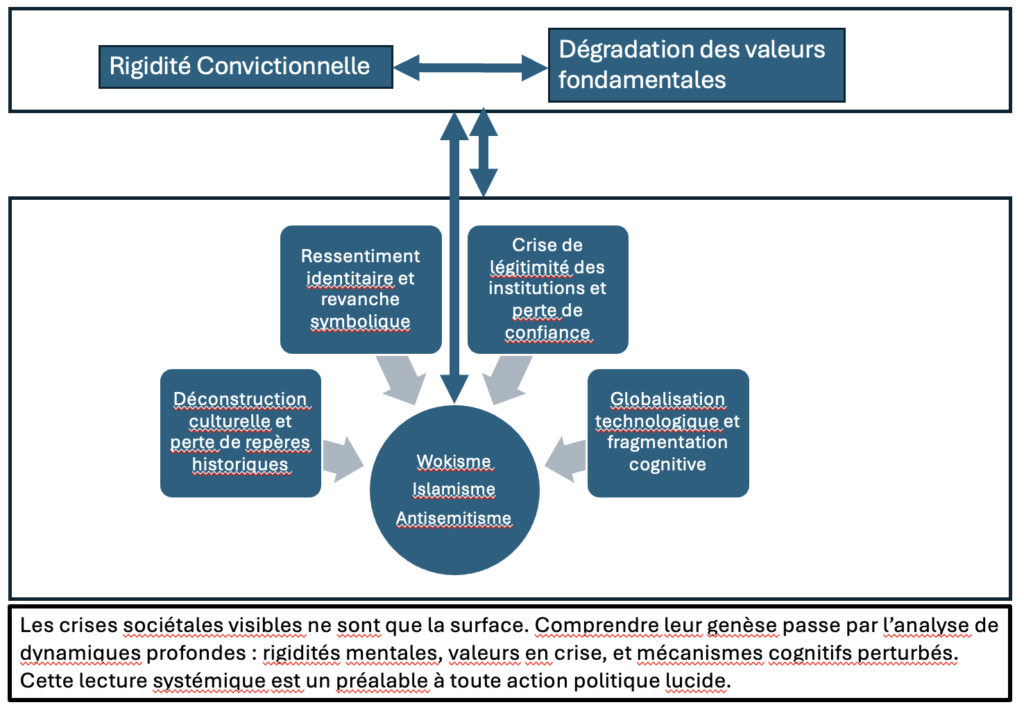1. Forgotten Symmetry
Convictional rigidity is the exact opposite—and symmetrical—of the reversibility of conviction. Where openness presupposes doubt, questioning, and listening, rigidity installs the lock of immovable certainties. It can be measured in six degrees, from simple repeated preference to sacred, unassailable certainty.
2. Individual or collective?
Individually, rigidity is often the result of a psychological trajectory or conditioning. Collectively, it becomes an ideology: it takes root in history, crystallizing in slogans, founding narratives, and charismatic figures. The transition from the individual to the collective is facilitated by social networks, the sense of belonging, and polarization.
3. What can the measurement of convictional rigidity be used for?
In political analysis, this measure becomes a diagnostic tool. It allows, for example in Israel, to understand the gaps in support for a common project, the strength of blockages between sociocultural groups, or even the strategies of sincere and non-political federations. It is in this spirit that we, in our Council of Elders, have questioned Naftali Bennett, whose unique profile can break through these rigidities.
4. Manufactures collective beliefs
The creation of a collective conviction can result from:
- of a cultural deconstruction,
- identity resentment,
- of the loss of institutional benchmarks,
- of a simplistic legitimizing discourse,
- peer validation in social bubbles.
Among the most striking forms of contemporary collective rigidity, we can cite global, extremely structuring sociopolitical phenomena such as:
wokeism, radical Islam, or even the resurgence of anti-Semitism.
All three reflect a form of adherence to self-contained beliefs, often impervious to debate or contradiction. Their propagation follows well-identified mechanisms of social reinforcement, community validation, and digital polarization.
follow my gaze to some European countries
5. A mental plague?
Convictional rigidity is akin to an epidemic of the mind: contagious, resistant to facts, and fueled by fear. Like the Black Death, it spreads quickly, is accompanied by scapegoating, and provokes irrational responses. But unlike a bodily virus, this one is endogenous: it is generated by humans themselves.
Open conclusion:
If the plague of the Middle Ages called for doctors, does convictional rigidity call for philosophers? Or must we invent a new mental hygiene, capable of restoring the porosity of minds in a world saturated with certainties?
Diagram of the interactions in creation and maintenance between rigidity and sociological movements

